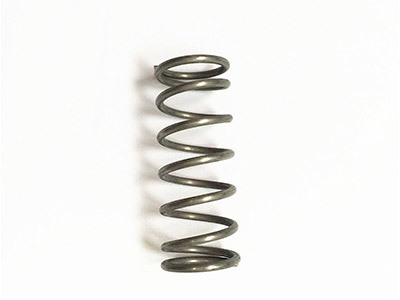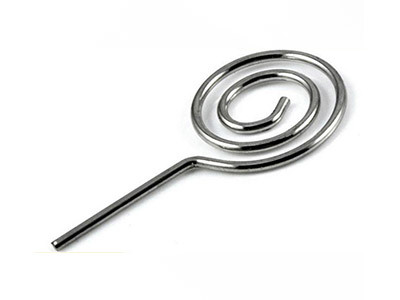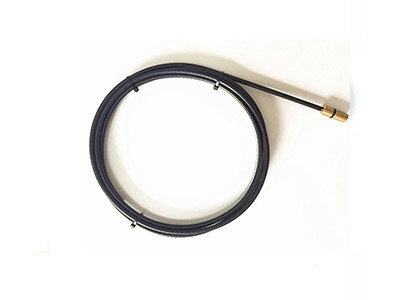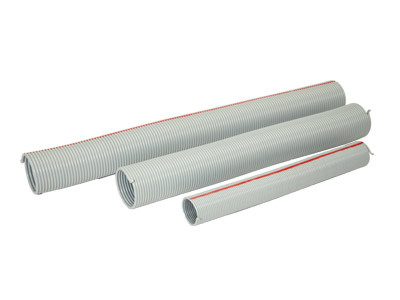Unlocking Value: A Comprehensive Guide to Discount Compression Springs
Release Time:
2025-05-16
Compression springs are vital components in various mechanical applications, providing resistance and storing energy. Understanding discount compression springs can be a game-changer for manufacturers and engineers looking to balance quality with cost-effectiveness. When discussing discount compression springs, it’s essential to first clarify what they are. Compression springs are helical springs

Compression springs are vital components in various mechanical applications, providing resistance and storing energy. Understanding discount compression springs can be a game-changer for manufacturers and engineers looking to balance quality with cost-effectiveness.
When discussing discount compression springs, it’s essential to first clarify what they are. Compression springs are helical springs designed to resist axial loads and are typically made from coiled wire. They compress when a load is applied, allowing them to store potential energy that can be released when the load is removed. Discount compression springs are simply those springs sold at reduced prices, providing an opportunity for significant savings without compromising on performance.
One of the primary advantages of purchasing discount compression springs is that they allow businesses to manage their production budgets more efficiently. In a competitive market, being able to source high-quality components at a lower cost can lead to improved profit margins. However, it’s crucial to ensure that discounted items meet industry standards and specifications to maintain the integrity of the overall product.
When sourcing discount compression springs, professionals should consider several factors. First, assess the material used in the springs. Common materials include stainless steel, music wire, and oil-tempered wire. Each material has different properties in terms of fatigue resistance, strength, and corrosion resistance. Selecting the right material is essential to ensure the springs will perform effectively in their intended application.
Secondly, pay attention to the spring dimensions and specifications, such as wire diameter, coil diameter, and the number of active coils. These factors will directly influence the spring's performance characteristics, such as its load capacity and deflection. Working with a trusted manufacturer or supplier can help ensure that the springs you choose will meet your specific requirements.
Moreover, consider the potential for customization. Many suppliers of discount compression springs offer custom solutions, allowing you to specify dimensions and materials that fit your project needs perfectly. This flexibility can be particularly beneficial in specialized applications where off-the-shelf products may not suffice.
Finally, always evaluate the supplier’s reputation and reliability. Look for customer reviews, testimonials, and their overall experience in the industry. A reliable supplier will offer not only competitive pricing but also valuable technical support, guiding you in selecting the best compression springs for your applications.
In summary, discount compression springs can be an excellent choice for professionals in manufacturing and mechanical design, offering quality components at reduced costs. By considering material selection, specifications, customization options, and supplier reliability, you can make informed decisions that enhance your projects while optimizing your budget.
When discussing discount compression springs, it’s essential to first clarify what they are. Compression springs are helical springs designed to resist axial loads and are typically made from coiled wire. They compress when a load is applied, allowing them to store potential energy that can be released when the load is removed. Discount compression springs are simply those springs sold at reduced prices, providing an opportunity for significant savings without compromising on performance.
One of the primary advantages of purchasing discount compression springs is that they allow businesses to manage their production budgets more efficiently. In a competitive market, being able to source high-quality components at a lower cost can lead to improved profit margins. However, it’s crucial to ensure that discounted items meet industry standards and specifications to maintain the integrity of the overall product.
When sourcing discount compression springs, professionals should consider several factors. First, assess the material used in the springs. Common materials include stainless steel, music wire, and oil-tempered wire. Each material has different properties in terms of fatigue resistance, strength, and corrosion resistance. Selecting the right material is essential to ensure the springs will perform effectively in their intended application.
Secondly, pay attention to the spring dimensions and specifications, such as wire diameter, coil diameter, and the number of active coils. These factors will directly influence the spring's performance characteristics, such as its load capacity and deflection. Working with a trusted manufacturer or supplier can help ensure that the springs you choose will meet your specific requirements.
Moreover, consider the potential for customization. Many suppliers of discount compression springs offer custom solutions, allowing you to specify dimensions and materials that fit your project needs perfectly. This flexibility can be particularly beneficial in specialized applications where off-the-shelf products may not suffice.
Finally, always evaluate the supplier’s reputation and reliability. Look for customer reviews, testimonials, and their overall experience in the industry. A reliable supplier will offer not only competitive pricing but also valuable technical support, guiding you in selecting the best compression springs for your applications.
In summary, discount compression springs can be an excellent choice for professionals in manufacturing and mechanical design, offering quality components at reduced costs. By considering material selection, specifications, customization options, and supplier reliability, you can make informed decisions that enhance your projects while optimizing your budget.
Related News







